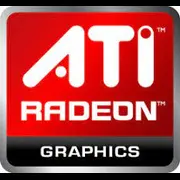ATI Radeon HD 5770 Mac Edition

ATI Radeon HD 5770 Mac Edition: A Retrospective and Relevance in 2025
An analysis of the capabilities and limitations of the legendary graphics card for enthusiasts and owners of older Mac systems.
Architecture and Key Features
TeraScale 2 Architecture: A Legacy from 2009
The ATI Radeon HD 5770 Mac Edition, released in 2010, is based on the TeraScale 2 architecture (codename "Evergreen"). This solution became part of AMD's first generation of GPUs that supported DirectX 11, which was a breakthrough at that time. The manufacturing process is 40 nm, considered advanced for the 2009-2010 era. The card features 800 stream processors, 40 texture units, and 16 raster operation pipelines.
Unique Features for Its Time
The HD 5770 stood out with Eyefinity technology, allowing the connection of up to three monitors simultaneously—a rare capability in those years. However, modern features like ray tracing (RTX), DLSS, or FidelityFX are absent. These technologies require hardware support that AMD only introduced with the RDNA (2019+) and NVIDIA RTX (2018+) architectures.
Memory: Modest Specs for Modern Tasks
GDDR5 and Limited Bandwidth
The card uses 1 GB of GDDR5 memory with a 128-bit bus. The bandwidth is 76.8 GB/s. For games released between 2009 and 2012, this was sufficient (for example, Crysis on medium settings), but by 2025, even basic titles like Fortnite or CS2 require a minimum of 4-6 GB of VRAM. The small memory size and narrow bus become a bottleneck: high-resolution textures and complex shaders lead to FPS drops.
Gaming Performance: Nostalgia Over Relevance
1080p: Only Older Titles and Indie Games
In 2025, the HD 5770 Mac Edition is suitable for retro gaming or less demanding indie titles. For example:
- Half-Life 2: 60+ FPS at maximum settings in 1080p.
- Skyrim (2011): 30-40 FPS on medium settings.
- Stardew Valley: Stable 60 FPS.
Modern AAA titles like Cyberpunk 2077 or Starfield won't run due to the lack of DirectX 12 Ultimate support and insufficient VRAM.
Ray Tracing and Upscaling: Unavailable
There are no hardware blocks for RTX or similar solutions from AMD (Ray Accelerators) in TeraScale 2. Software emulation of ray tracing is impossible due to the low computational power.
Professional Tasks: Minimal Suitability
OpenCL and Basic Computations
The HD 5770 supports OpenCL 1.1, allowing it to handle simple tasks:
- Video conversion in HandBrake (50-70% slower compared to modern GPUs).
- Rendering in Blender 4.0: Only basic scenes, processing times 5-10 times longer than a Radeon RX 6600.
CUDA and Specialized SDKs: Not Supported
NVIDIA technologies like CUDA, OptiX, or AI tools are unavailable. The card is unsuitable for machine learning or 3D modeling.
Power Consumption and Heat Dissipation
TDP 108W: Modest, but Requires a Quality PSU
By 2025 standards, the HD 5770 is energy-efficient, but it requires a power supply of at least 450W (considering other components) for stable operation.
Cooling and Case Compatibility
The standard cooling system uses a single fan. Recommendations:
- A case with a minimum of 2-3 fans for heat dissipation.
- Regular thermal paste replacement (every 2-3 years).
Noise levels can reach up to 35 dB under load, which is higher than modern equivalents with passive cooling modes.
Comparison with Competitors: Then and Now
Against Modern Budget Options
By 2025, even entry-level GPUs like the AMD Radeon RX 6400 ($100) or Intel Arc A310 ($90) outperform the HD 5770 by 3-5 times in performance, support DirectX 12 Ultimate, and come with 4 GB of GDDR6.
Historical Comparisons
In 2010, competitors included NVIDIA GeForce GTS 450 and GTX 550 Ti. The HD 5770 excelled in energy efficiency, but lagged behind the GTX 560 Ti in performance.
Practical Tips for Users
Power Supply and Compatibility
- Minimum PSU: 450W with an 80+ Bronze certification.
- Connectors: A 6-pin PCIe connector is mandatory.
Platforms and Drivers
- macOS: Official support ended after macOS High Sierra (2017). Patches or emulation are required for use in modern versions (macOS Sonoma and newer).
- Windows/Linux: AMD Catalyst drivers are outdated, but basic functions are available through open-source drivers (e.g., Mesa for Linux).
Pros and Cons of the Graphics Card
Pros:
- Low power consumption for its class.
- Eyefinity support for multi-monitor setups.
- Quieter operation compared to top-tier GPUs from the 2010s.
Cons:
- Outdated APIs (DirectX 11, OpenGL 4.1).
- Only 1 GB of VRAM.
- No support for modern technologies (RTX, FSR, AV1).
Final Conclusion: Who is the HD 5770 Mac Edition For?
This graphics card is an artifact of its time, relevant in 2025 only for:
1. Owners of Older Macs (e.g., Mac Pro 2009–2012) who wish to maintain system authenticity.
2. Retro Hardware Enthusiasts building PCs to run classic games and software.
3. Users looking for a temporary replacement for a broken GPU at a symbolic price (on the second-hand market, around $20–40).
For modern tasks—gaming, video editing, 3D rendering—the HD 5770 is unsuitable. Its value today lies in nostalgia and historical significance as one of the first GPUs with DirectX 11 and Eyefinity support. If you need performance, consider budget newcomers of 2025: the AMD Radeon RX 7500 or the NVIDIA GeForce RTX 4050.
Basic
Memory Specifications
Theoretical Performance
Miscellaneous
Benchmarks
Compared to Other GPU
Share in social media
Or Link To Us
<a href="https://cputronic.com/gpu/ati-radeon-hd-5770-mac-edition" target="_blank">ATI Radeon HD 5770 Mac Edition</a>